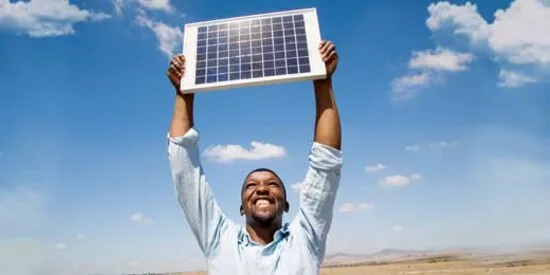
Securitization is Driving Adoption of Solar in U.S. homes
One of the primary drivers behind this rapid adoption of solar technology has been an innovative financial tool: solar loan asset-backed securities (ABS). Solar loan ABS have become popular with investors because of the benefits that the structure offers to them.
This year’s geopolitical instability and extreme weather are playing havoc with the reliability of oil and natural gas supplies and consequently what consumers can count on to pay to keep their residences cooled or heated.
The practical reality of an over-reliance on fossil fuels is hitting home, literally.
Of course, there’s been great progress in developing alternative, cleaner and sustainable forms of energy to help supplant fossil fuels and our reliance on them to power our industries and electrify our homes, but petroleum, natural gas and coal still account for almost 80% of U.S. primary energy consumption, according to the U.S. Energy Information Administration’s most recent data.
Renewable energy sources combined account for about 12%. But the good news is, it’s climbing.
And one segment that is growing particularly fast is residential solar. Homeowners are adopting solar technology to power their homes at a record pace in 2022, helping move the U.S.’s transition to greener energy along the way.
And the recent passage of the U.S.’s Inflation Reduction Act will further encourage solar investments by increasing and extending the Investment Tax Credit for residential solar systems. (Up from 26% to 30% for the tax credit and extends the program to Jan. 1, 2034.)
Global adoption of solar is moving apace as well with the EU pushing for renewables to become a main energy source, eventually stealing a large share of the energy market. And conversion to solar in huge Asian markets like China and India is also gaining steam, fueled by large state subsidies and cheap installation costs.
One of the primary drivers behind this rapid adoption of solar technology has been an innovative financial tool: solar loan asset-backed securities (ABS). Solar loan ABS have become popular with investors because of the benefits that the structure offers to them.
“For investors, solar loan ABS are popular because they are less risky than other types of investments, offering stable cash flows, and high diversification,” said John D’Elisa, Head of US ABS Structuring at Societe Generale, whose team works on structuring, originating and marketing solar securitizations.
Another benefit of investing in solar ABS is that the issuers are generally experienced and typically focused solely on the residential solar market, according to D’Elisa. “Due to their expertise in the residential solar market, each issuer has partnerships with the leading systems installers across the U.S. and finances Tier one equipment,” he said.
Solar loans also provide investors with stable cash flows underpinned by strong economic incentives for homeowners. Because of the continued reduction in the cost of solar panels, solar energy is now competitive versus other energy sources in most states. Residential solar energy systems are generally sized to provide more than 90% of a home’s current usage, meaning that the electricity provided by residential solar systems lowers a homeowner’s utility bill and can often almost entirely offset the loan payments. Solar ABS loans also provide customers with fixed, monthly payments and give the homeowner full ownership of the panel.
And, of importance to investors, because of the increasing demand among homeowners to adopt solar energy, solar loans are offered to homeowners with high average FICO scores, mitigating the risk of borrowers defaulting on the loan. The underlying pool of solar contracts also provides investors with diversification across different states, utilities and installers.
Currently there are more than 3.175 million solar energy systems that have been installed in the U.S., equal to 100 gigawatts of solar power, which is enough energy to provide power to 18.9 million homes.
This is making a big difference in greenhouse gas emissions; residential energy use comprises roughly 20% of overall US greenhouse gas emissions, according to a recent study.
“Societe Generale understands the importance of making this transition to cleaner forms of energy and is actively helping facilitate it in the U.S. and around the globe. Structuring solar loan ABS helps move the energy transition along in a way that is economically favorable to both investors and residential homeowners,” said D’Elisa.
The solar industry expects the fast growth to continue in the coming years, with an estimated 13.4% of U.S. homes expected to have solar systems installed by 2030. The solar industry has set a goal to reach 20% of all electricity generation in the U.S. by 2030, a dramatic increase from the approximately 4% of all U.S. electricity that solar currently generates.
To meet these ambitious goals, solar will need to see greater conversion among homeowners.
“We currently provide solar securitization financing to solar finance companies and look forward to continuing to grow the solar ABS market to help accelerate the transition to cleaner forms of energy,” said D’Elisa.




